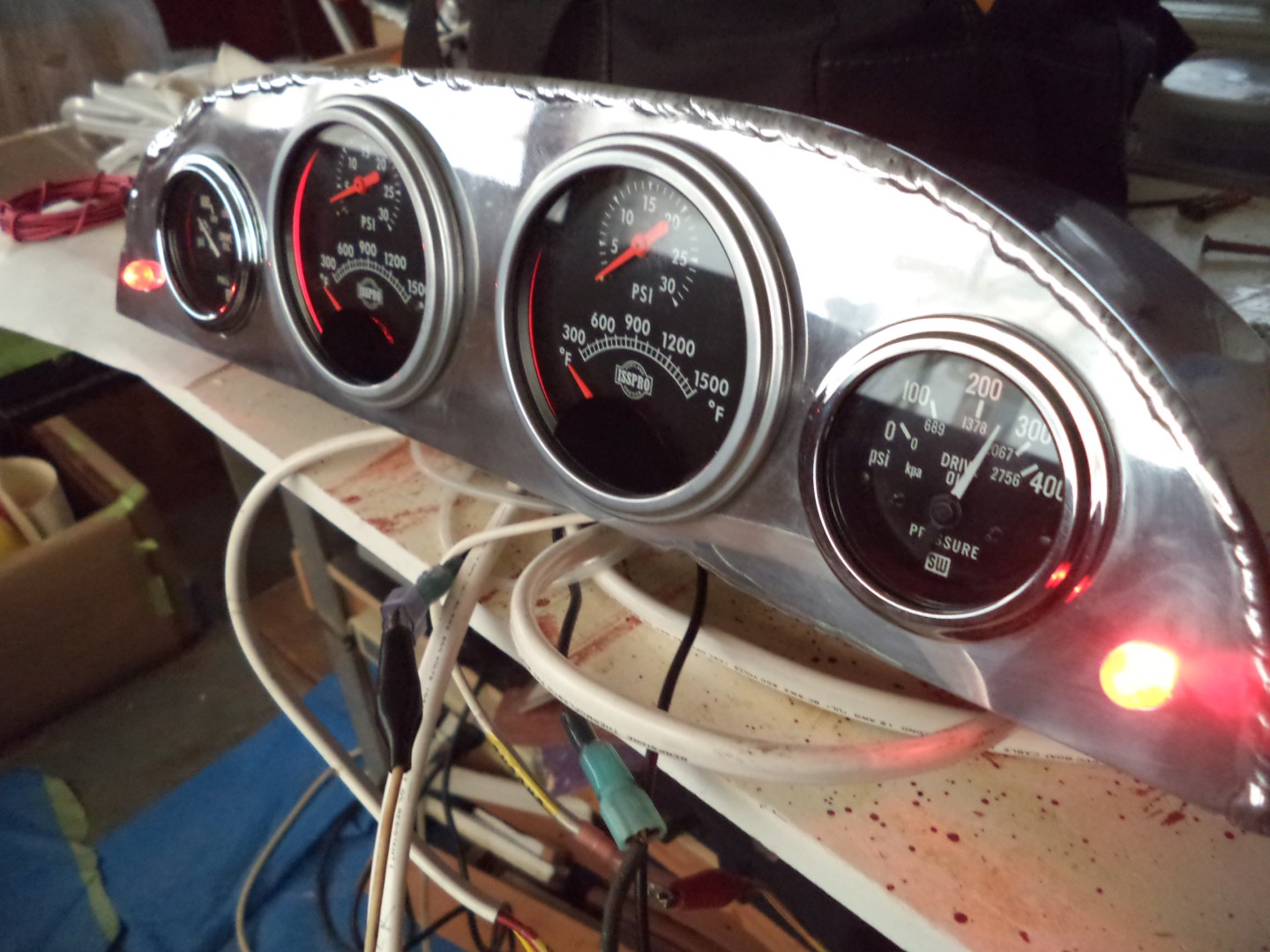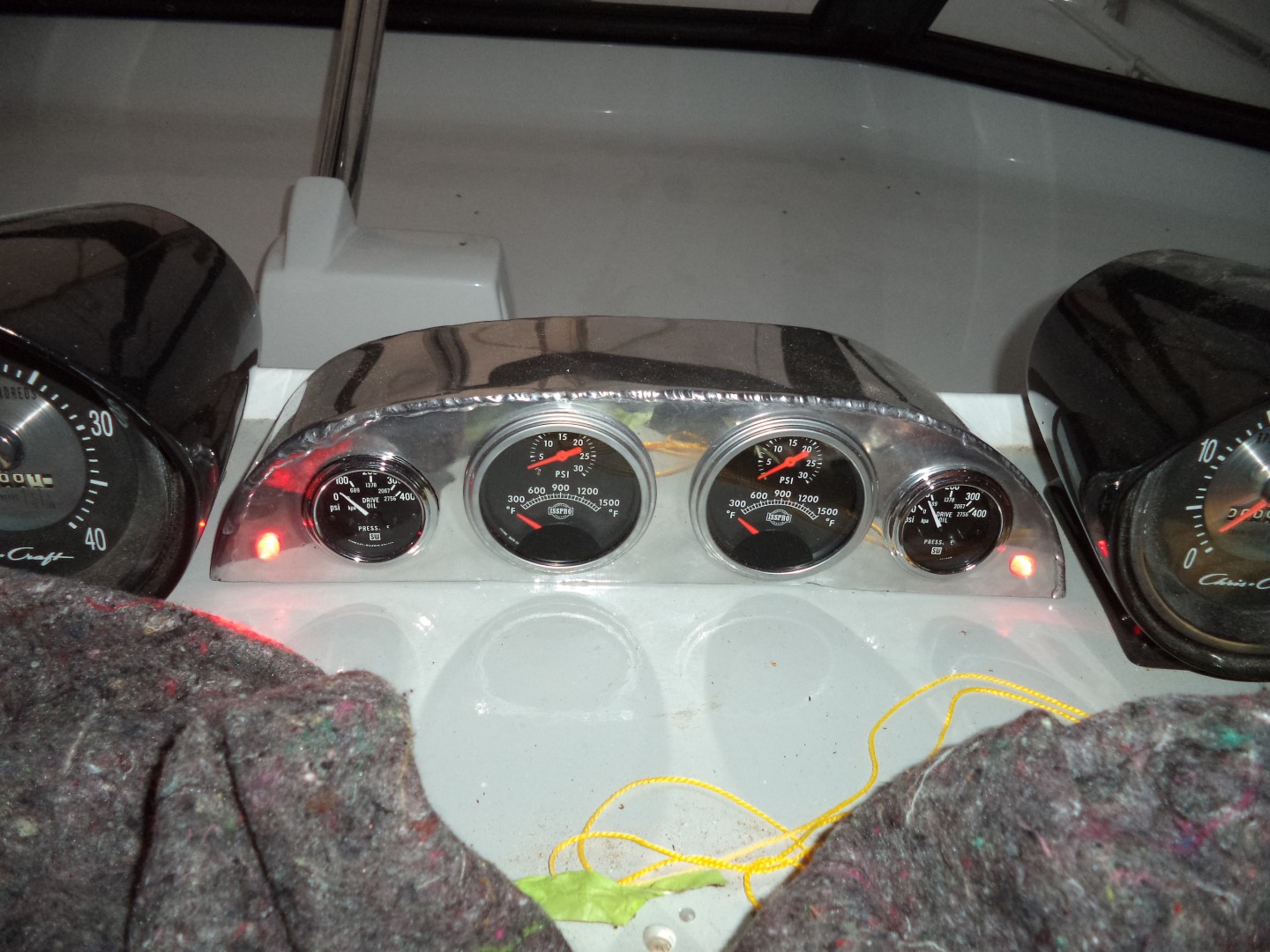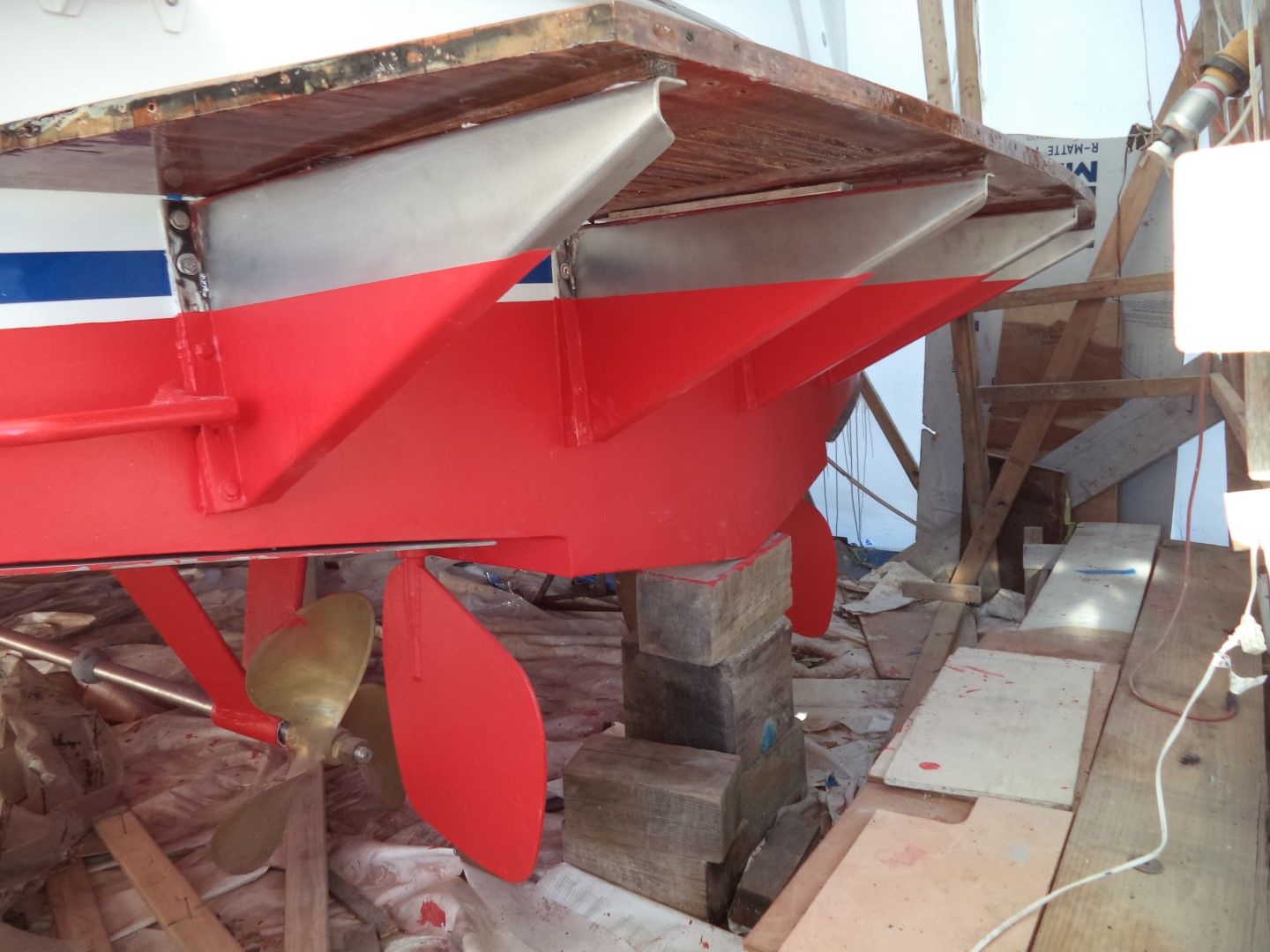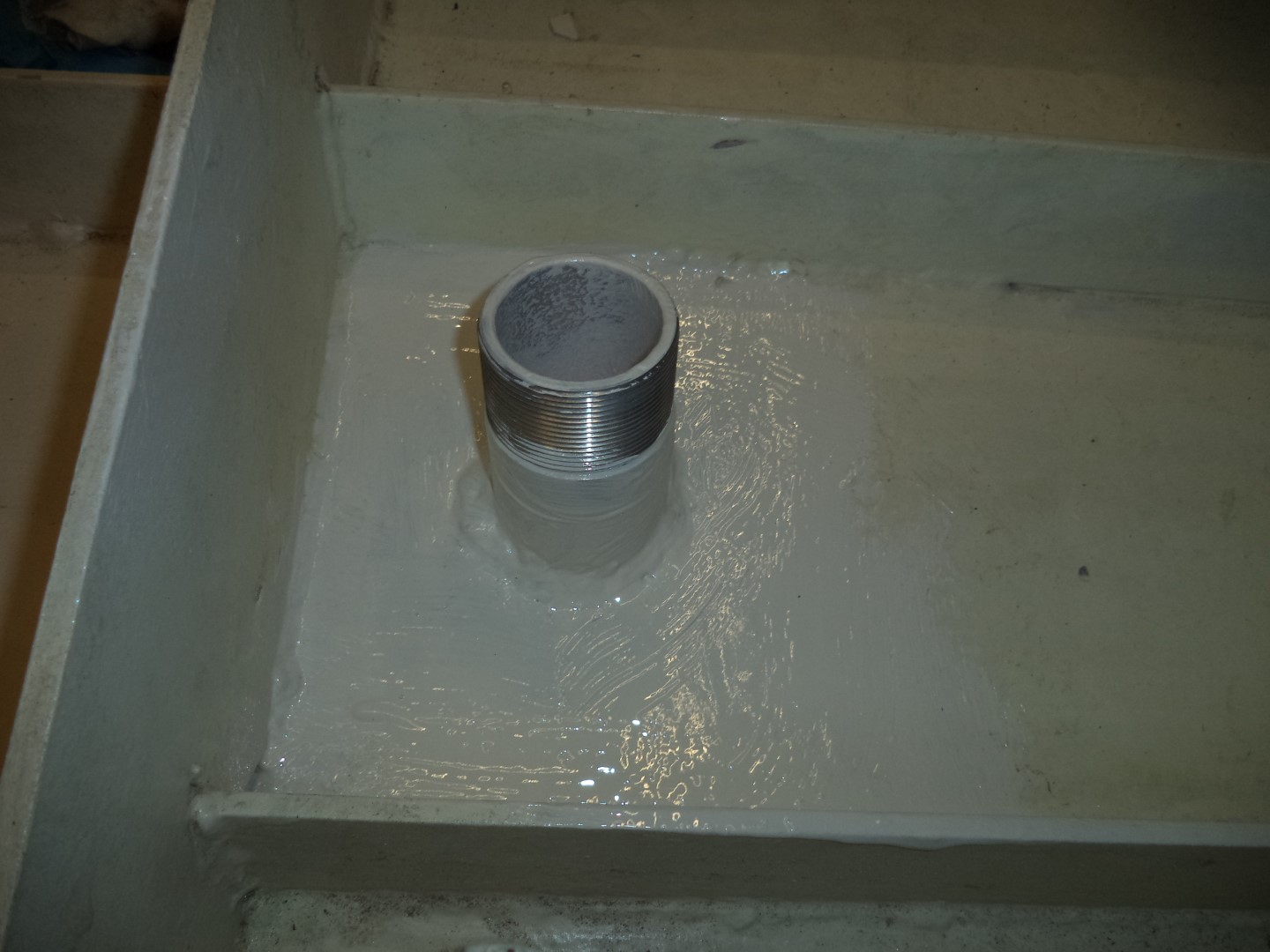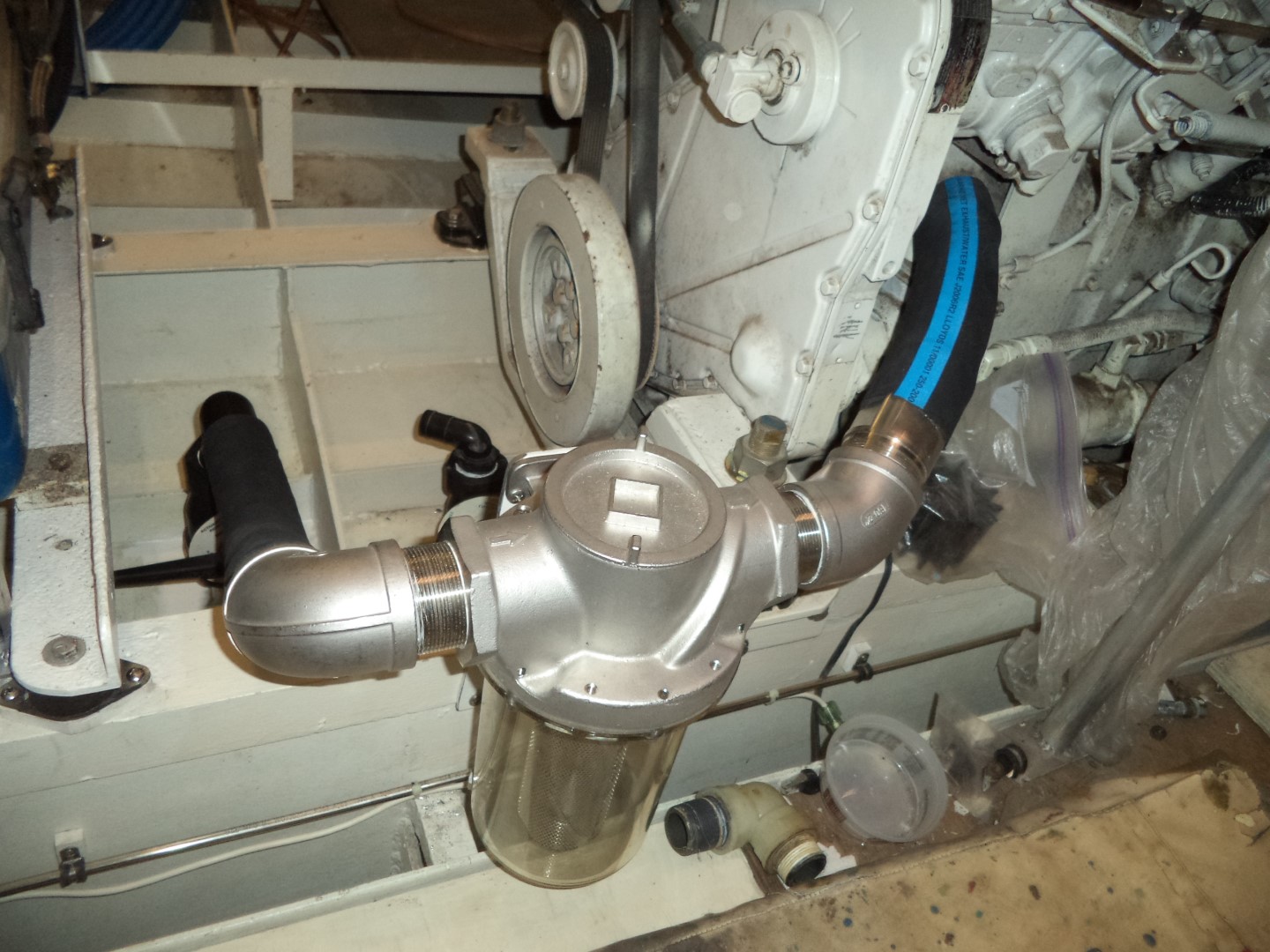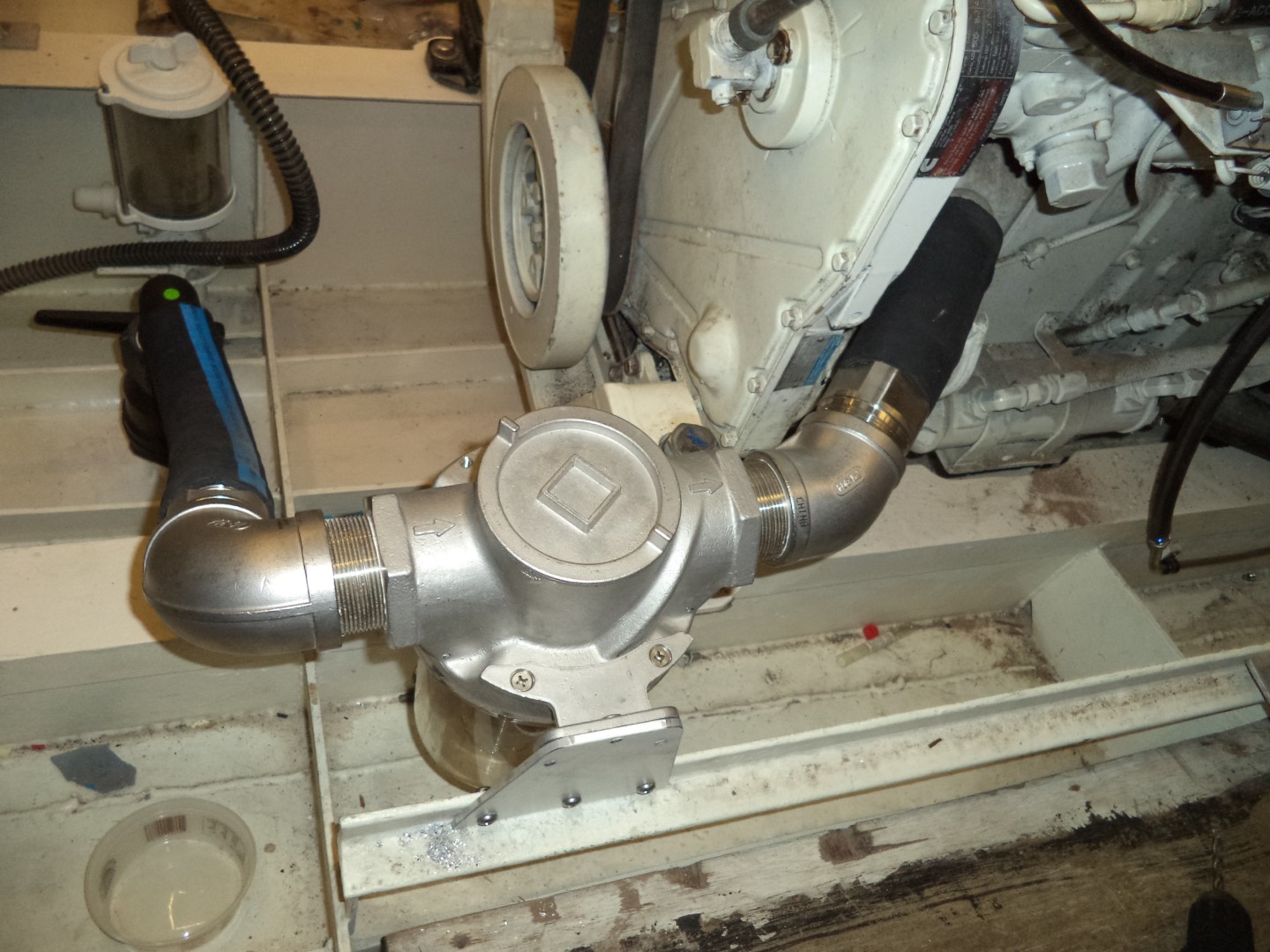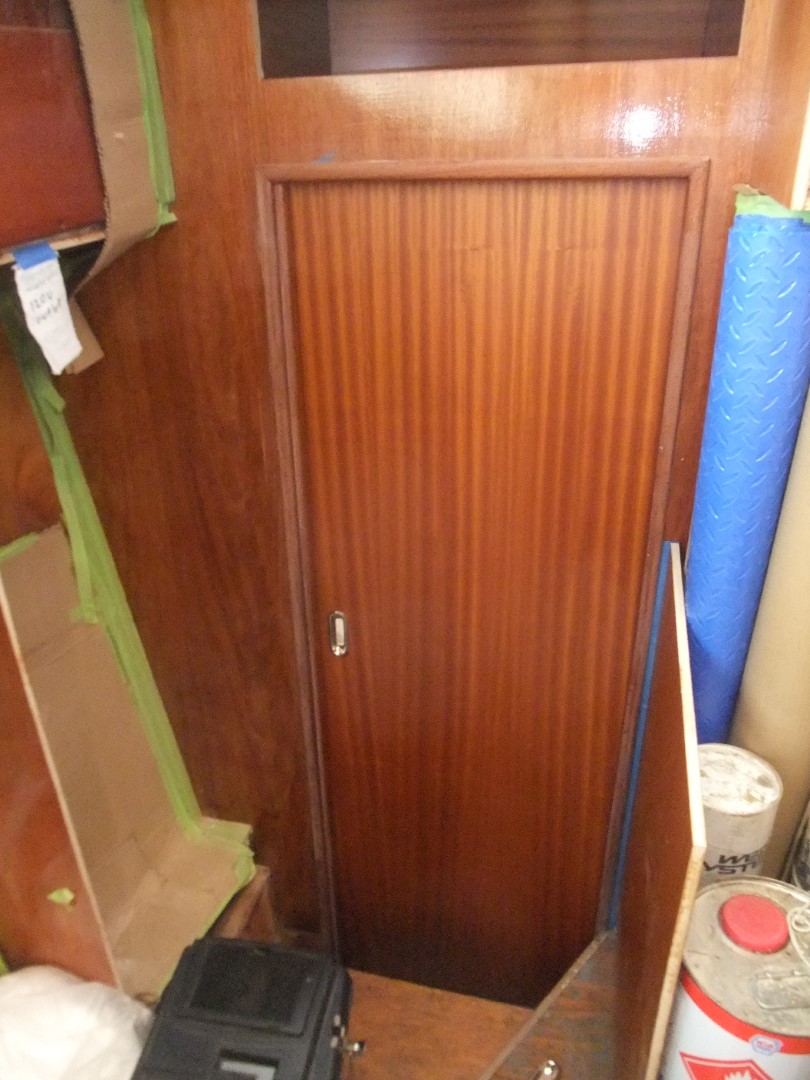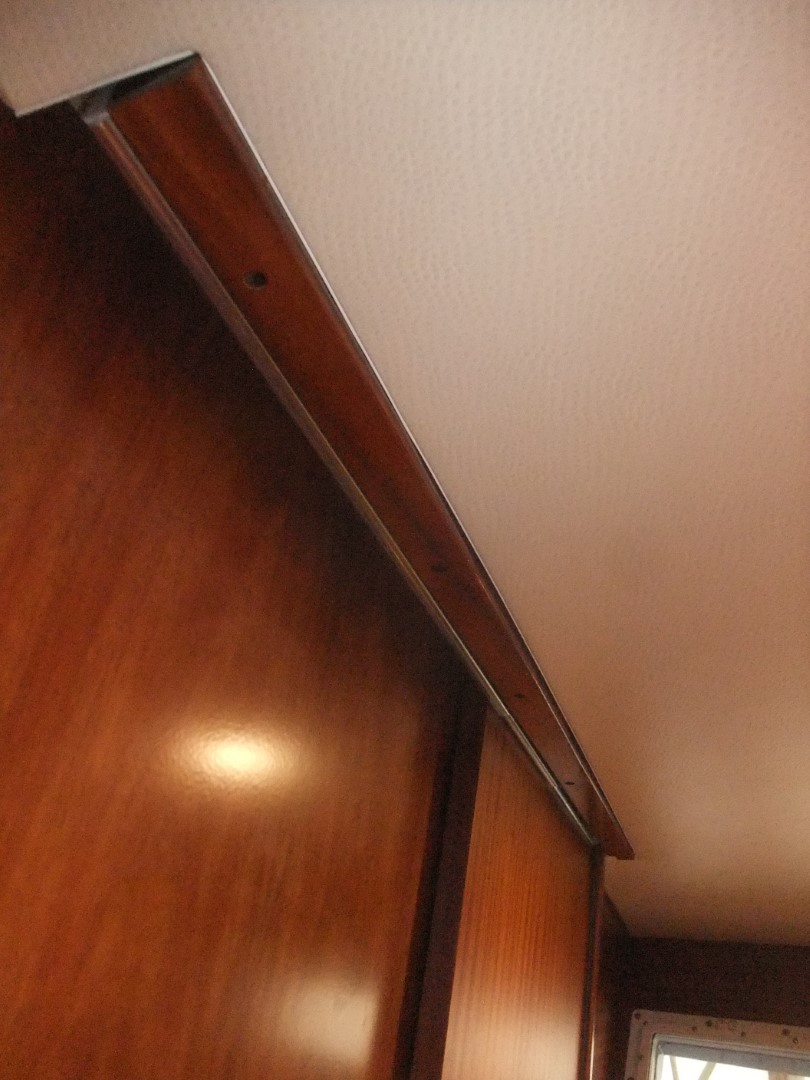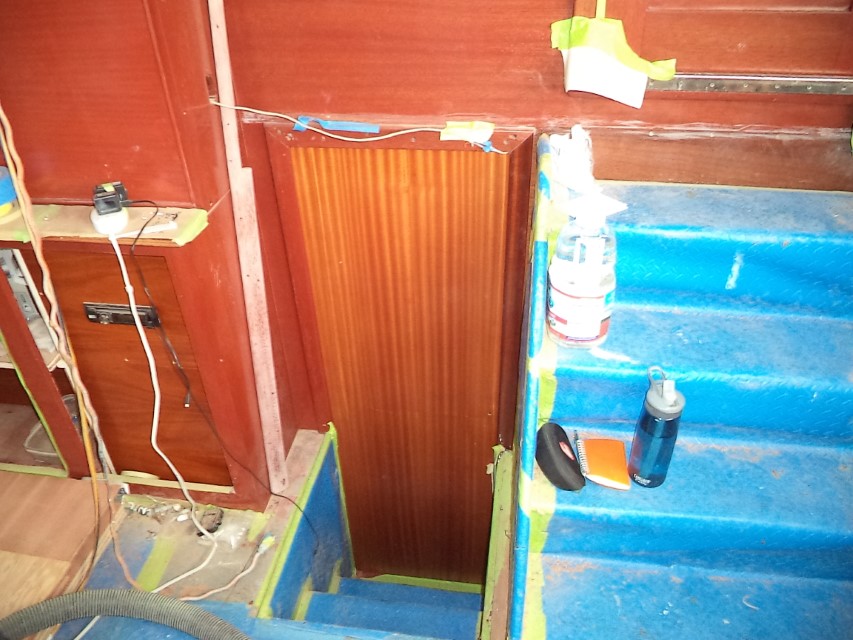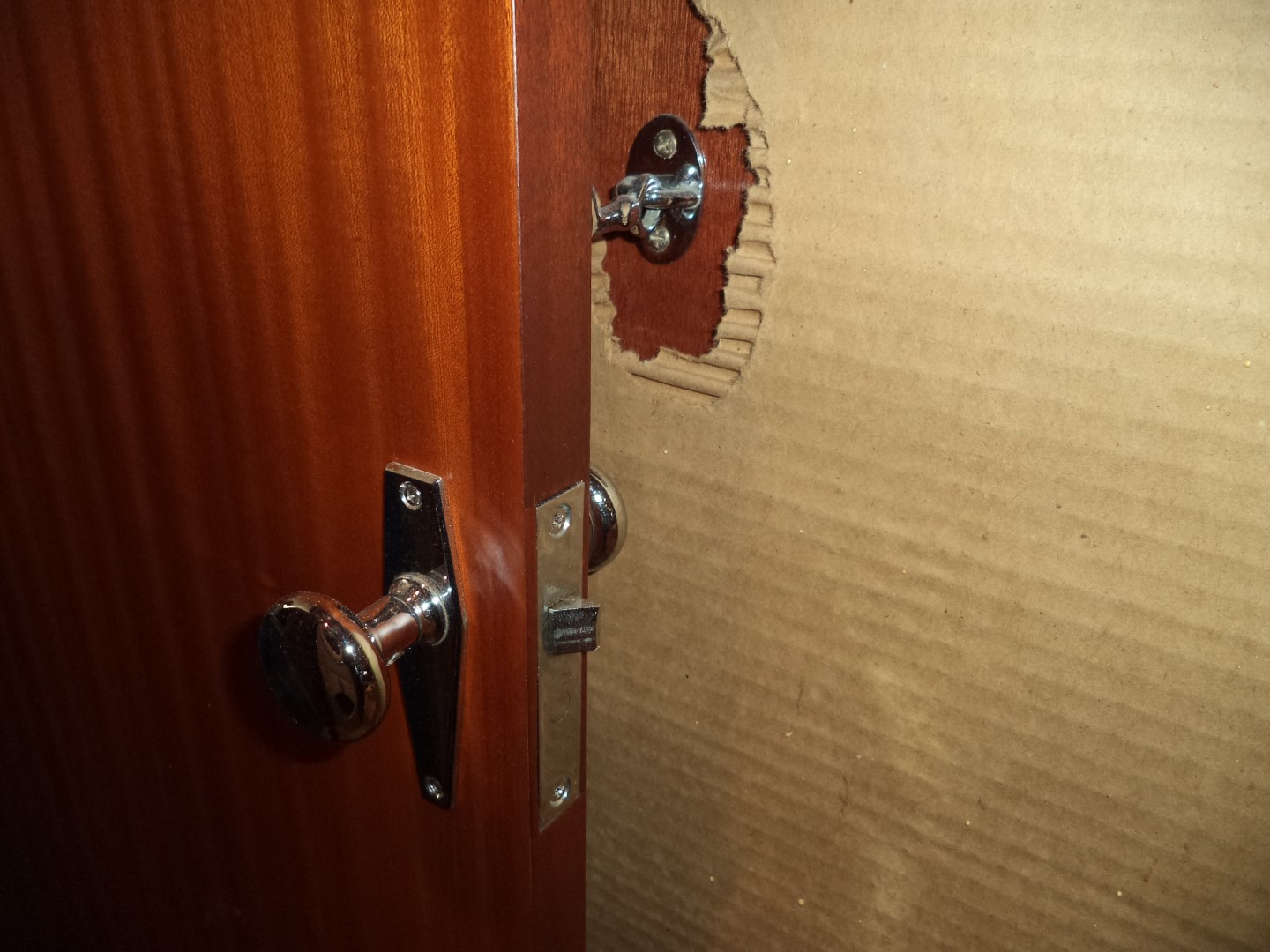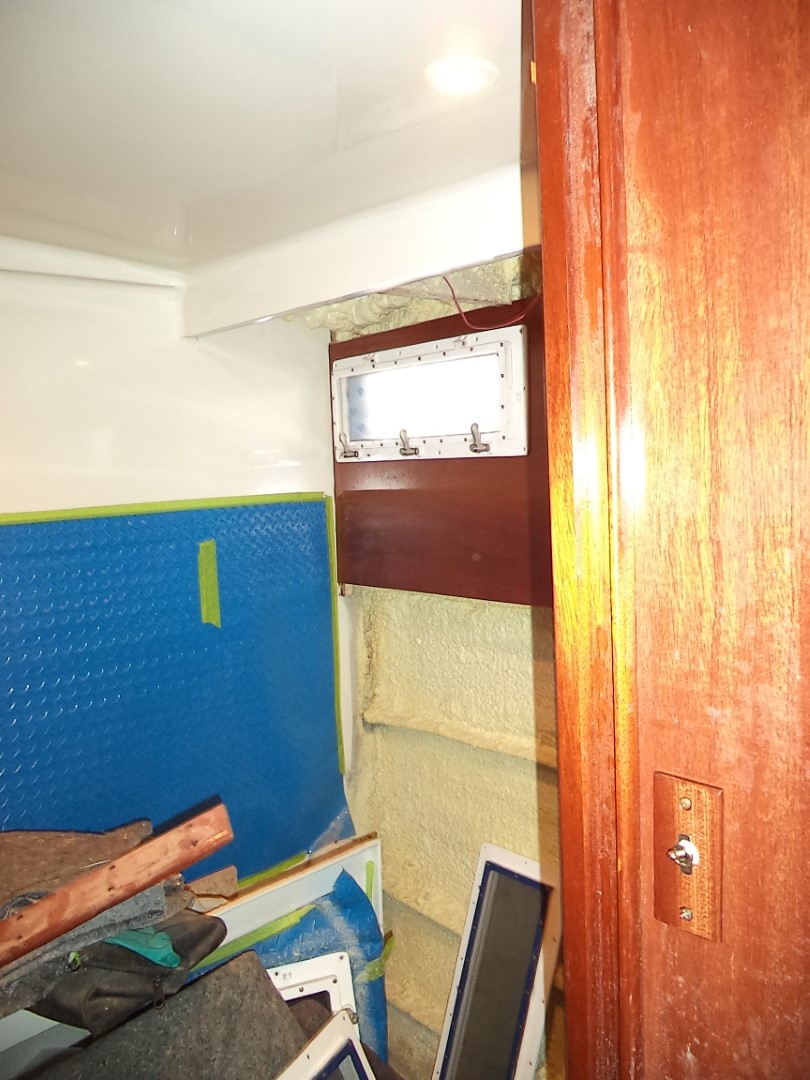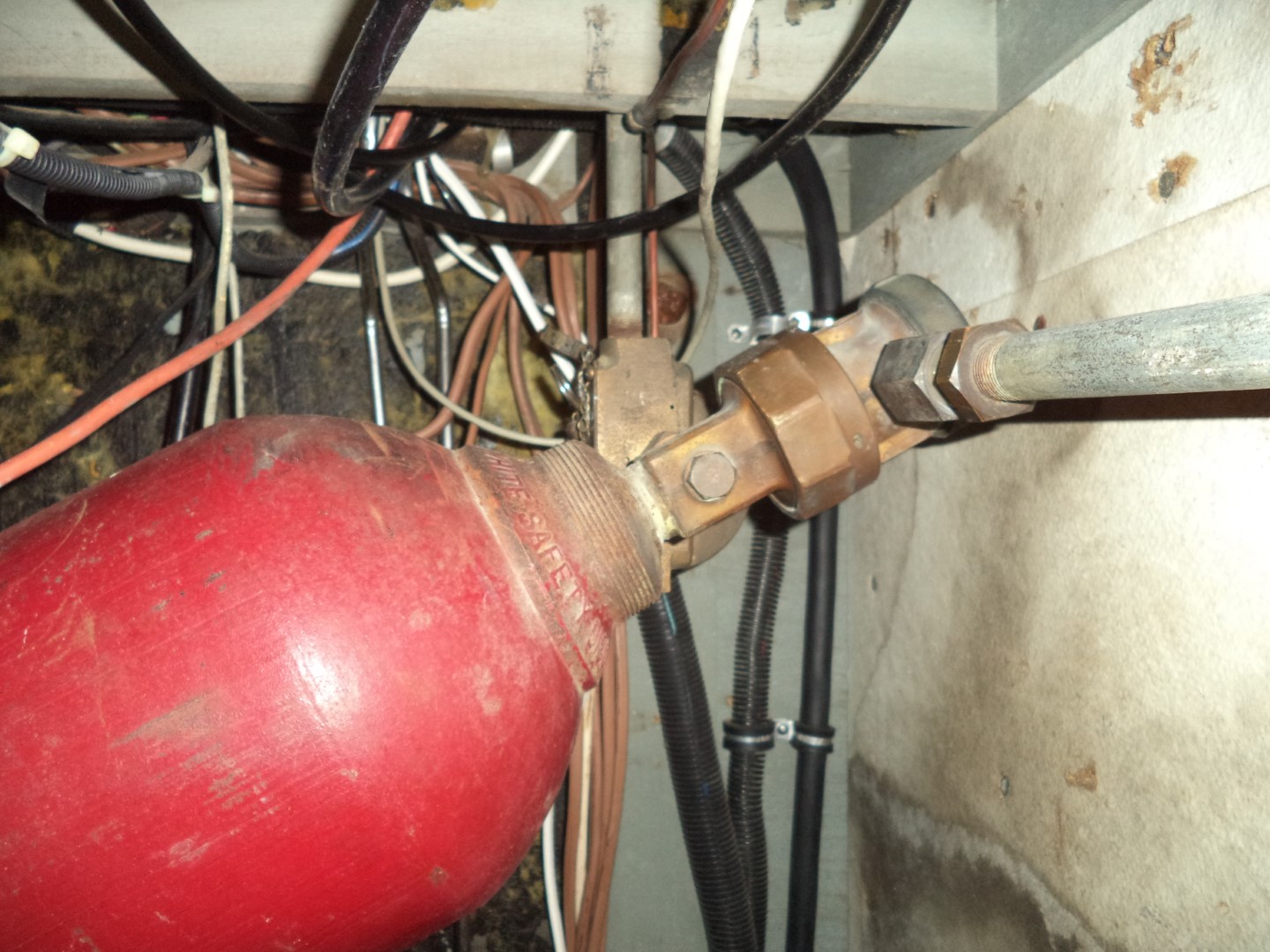Ever since I installed the Cummins 6CTA engines, I've been keeping in the back of my head what I should do about the Isspro Turbocator (dual read-out boost/exhaust temp) gauges. I had a few ideas about replicating the OEM tachometer housings, but the more I thought about it that just didn't seem feasible. Then I decided I also want to know what my gear oil pressures are, so that's another two gauges I needed to find homes for. The helm station radio box is full, and having them down below the dashboard makes them fairly out of sight, which also means out of mind.
I was also keeping in mind that somebody prior to 1985, when the boat was moved to Purgatory Row, had drilled and cut an ugly rectangular hole right in the top of the dashboard, between the two tachometer housings. What if I could make a housing that fit all four gauges AND covered that big hole?!?
So I took some scrap 1/8" aluminum plate from when I cut up an old but unused holding tank that I bought for cheap and made a custom instrument panel. I also tossed in some LED telltale lights for the forward and aft bilge pumps. Don't stare too closely at the TIG welds...or if you do, please be gentle with the comments. Saying I'm a weekend warrior welder is a gross overstatement, and I taught myself how at a fairly advanced age, so I just don't have the robotic muscle memory of some pros I've seen.
On the other hand, I'd put my welds up against many of the so-called pros in my neck of the woods.
Anyway, I think it turned out pretty good, all things considered.
1969 Chris Craft Roamer 46 Refit: Making a Custom Instrument Panel
Cheers,
Q

